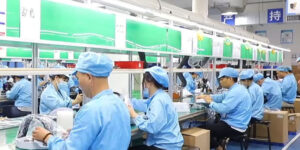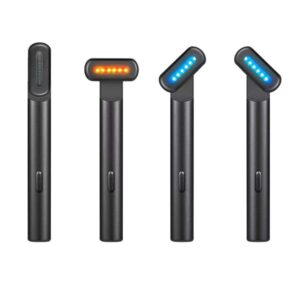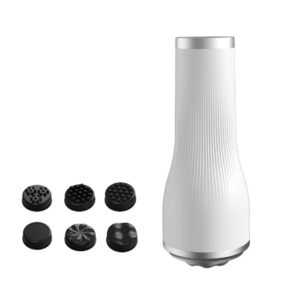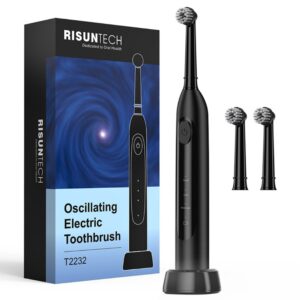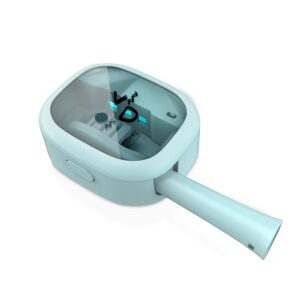Summary
Red light therapy combs, a form of low-level laser therapy (LLLT), have emerged as a popular non-invasive treatment for hair growth, particularly among individuals experiencing androgenetic alopecia (AGA), the leading cause of hair loss affecting millions worldwide. Utilizing specific wavelengths of red light, typically ranging from 630 to 660 nanometers, these devices aim to stimulate hair follicles by enhancing cellular energy production and improving blood circulation in the scalp. As interest in LLLT grows, these combs represent a convergence of technology and health, appealing to those seeking alternatives to traditional hair loss treatments like minoxidil or finasteride.
The notability of red light therapy combs stems from their potential effectiveness and accessibility, as they can be used conveniently at home. Early research has indicated positive outcomes in hair density and growth, making them a sought-after option for individuals looking to combat hair loss without resorting to surgical interventions. However, the efficacy of these devices is still under scrutiny, with calls for more extensive clinical trials to validate their benefits and long-term results. Critics often point out that many devices on the market lack robust scientific backing, raising concerns over their legitimacy and the marketing practices employed by manufacturers.
Despite the promise of LLLT for hair restoration, several controversies persist regarding its safety, efficacy, and regulatory status. While the treatment is generally considered safe, with minimal side effects, the lack of stringent FDA approval processes for many devices has led to skepticism about their true effectiveness. Furthermore, some users may experience initial hair shedding or temporary skin irritation, raising questions about the overall user experience and satisfaction with these products. As research continues to unfold, consumers and healthcare professionals alike are urged to exercise caution and seek evidence-based guidance before adopting these therapies.
In summary, red light therapy combs represent a modern approach to addressing hair loss, blending technology with therapeutic potential. Their growing popularity underscores the need for reliable clinical research to substantiate claims and ensure safe usage, particularly as misconceptions about their effectiveness and application abound. As the field evolves, ongoing advancements in technology and regulation will play a critical role in shaping the future of hair restoration treatments through red light therapy.
Table of Contents
Historical Background
Red light therapy has a rich history, beginning with its early applications in the medical field. Initially used by dermatologists for the treatment of precancerous and early-stage skin cancers, red light therapy gained traction through its incorporation into photodynamic therapy, where specific wavelengths of light combined with photosensitizer drugs can effectively kill damaged skin cells while promoting the growth of new skin.
In the early 1990s, NASA’s research marked a significant turning point in the development of red light therapy. The agency began experimenting with red and near-infrared light to promote plant growth in space and subsequently discovered that these wavelengths could accelerate wound healing in astronauts. This finding not only highlighted the potential medical benefits of red light therapy but also paved the way for extensive research into its applications across various health issues, including skin conditions like acne, psoriasis, and hair loss.
As scientific interest in red light therapy grew, the terminology surrounding it evolved, leading to the adoption of various names such as low-level laser therapy (LLLT) and photobiomodulation. These terms emphasize the treatment’s non-invasive nature and its role in stimulating cellular activity, improving blood flow, and enhancing the overall health of hair follicles, which is particularly relevant for conditions like androgenetic alopecia (AGA), the most common cause of hair loss worldwide.
Despite its promising applications, the clinical proof of efficacy for many red light therapy devices, particularly those cleared through the FDA’s 510(k) process, remains a topic of discussion. While some studies suggest improvements in hair growth and density due to red light therapy, the lack of extensive clinical trials for many marketed devices calls for cautious interpretation of results and continued research in this field.
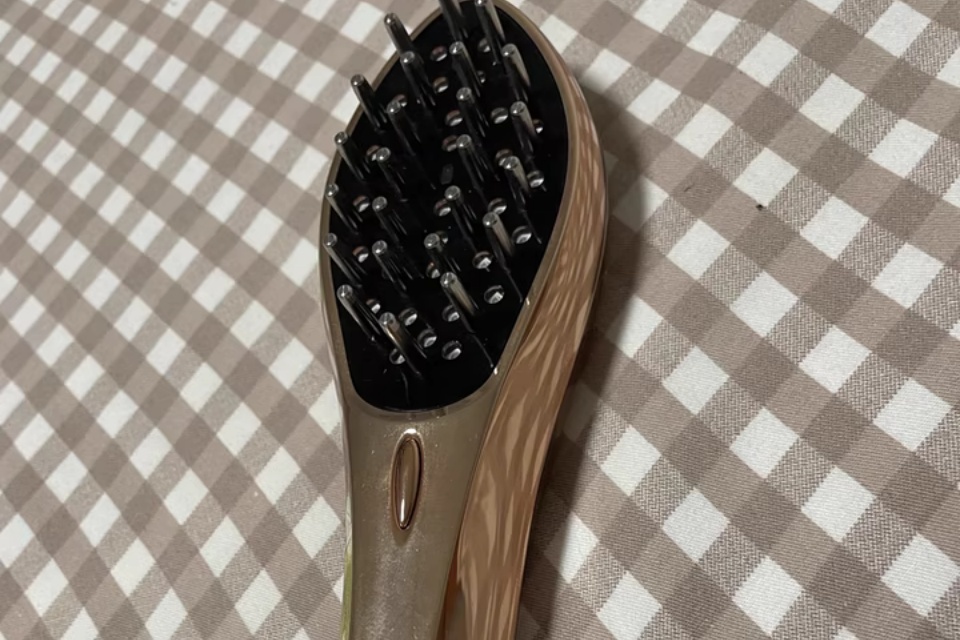
Mechanism of Action
Red light therapy (RLT) is grounded in the principles of photobiomodulation, wherein light energy penetrates the skin to stimulate biological processes, particularly in hair follicles. This stimulation is thought to enhance cellular energy production by acting on mitochondria, the “power plants” of cells, thereby improving cell function and repair. Specifically, RLT is believed to promote increased production of mitochondria, which leads to enhanced cellular activities such as hair growth.
Hair Growth Cycle Interaction
The hair growth cycle consists of three main phases: the anagen (growth) phase, the catagen (regression) phase, and the telogen (rest) phase. In conditions like androgenetic alopecia (AGA), there is often a shortening of the anagen phase, leading to thinner hair and premature entry into the telogen phase. Red light therapy is hypothesized to help counteract this process by stimulating hair follicles and promoting a longer anagen phase through increased blood flow and cellular activity.
Biological Processes Activated by RLT
RLT induces a series of biological processes that support hair growth. The application of red light promotes angiogenesis, which enhances blood flow to the scalp, thus supplying hair follicles with vital nutrients and oxygen. Additionally, the stimulation of bulge stem cells (BSCs) in hair follicles leads to the proliferation of follicular cells, primarily epithelial cells and dermal papilla cells (DPCs), which are crucial for hair growth. This regenerative activation also involves the upregulation of growth factors like Vascular Endothelial Growth Factor (VEGF) and Wnt pathway components, which further stimulate hair growth and improve follicle function.
Wavelength Considerations
The efficacy of RLT for hair growth can depend significantly on the wavelength of light used. Studies have focused on red light wavelengths ranging from 630 nm to 660 nm and near-infrared light at around 810 nm. These wavelengths are particularly effective in penetrating the scalp to reach hair follicles, thereby maximizing the therapeutic benefits. The selection of wavelengths plays a critical role in the stimulation of biological processes associated with hair growth.

Applications
Overview of Androgenetic Alopecia
Androgenetic alopecia (AGA) is the most prevalent cause of hair loss globally, affecting approximately 70% of men and 40% of women, particularly in the frontal and parietal regions of the scalp. The condition can manifest differently among individuals, with males graded according to the modified Norwood-Hamilton classification and females according to the Ludwig scale. Effective treatments are crucial for those affected, as the disorder can significantly impact quality of life.
Low-Level Laser Therapy (LLLT)
Low-level laser therapy has emerged as a non-invasive treatment option for AGA, promoting hair growth through improved circulation and stimulating hair follicles. A study involving 20 Indian patients demonstrated that a 675-nm laser improved hair density and other hair parameters after a series of treatments, facilitating the transition to the anagen phase while minimizing side effects compared to conventional therapies. This treatment modality is considered safe, with minimal risks such as transient redness or irritation.
Combining Therapies
For enhanced efficacy, LLLT can be combined with other hair restoration methods. Techniques such as Alma TED treatments or the use of topical agents like Minoxidil have shown promising results when paired with laser therapy. Recent advancements in nanotechnology have also facilitated improved delivery mechanisms for topical treatments, potentially increasing their effectiveness and safety profile.
Emerging Technologies
Innovations in nanotechnology, including the use of polymeric nanoparticles and bioinks for 3D bioprinting, are paving the way for novel approaches in AGA treatment. For instance, lecithin-based nanoestructures for Minoxidil have been found to enhance percutaneous delivery while reducing skin side effects, suggesting a trend towards safer and more efficient topical therapies.
At-Home versus In-Office Treatments
The choice between at-home LLLT devices and in-office treatments largely depends on individual preferences and circumstances. At-home devices, if FDA-cleared and well-reviewed, offer a flexible, accessible solution for users. Conversely, in-office treatments may provide more immediate and potent results due to professional oversight and advanced technology.
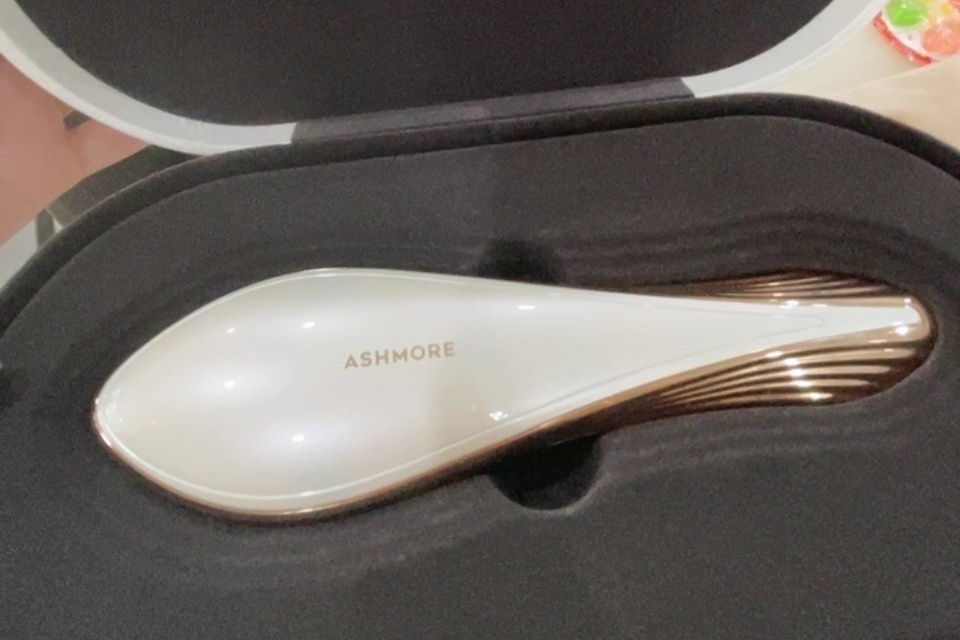
Effectiveness
Red light therapy (RLT) has garnered attention as a potential treatment for various types of hair loss, particularly androgenetic alopecia (AGA), which affects millions of individuals worldwide. Despite the growing interest and some promising results, the overall effectiveness of RLT remains under scrutiny.
Current Research Findings
While some studies indicate that RLT may be effective in stimulating hair growth and reversing balding, the evidence supporting its use is still limited. Most experts agree that the existing studies show potential for certain conditions, but they stress the need for more rigorous research to substantiate these claims. The gold standard for determining treatment effectiveness is randomized, placebo-controlled trials, which involve a group receiving the actual treatment and a control group receiving a sham treatment. Such designs help ensure that results are not due to placebo effects or other variables.
Limitations of Existing Studies
Many of the studies published to date have focused on individuals with mild to moderate pattern hair loss, and no studies have specifically investigated the efficacy of RLT in severe cases of hair loss. Furthermore, the duration of most trials has been relatively short, with none exceeding 26 weeks, which raises questions about the long-term effectiveness of RLT. The treatment duration itself is influenced by the power density of the device used; higher power density allows for shorter treatment sessions, while still maintaining efficacy within a therapeutic range.
Comparative Studies and Outcomes
Comparative studies have shown that RLT may provide some benefit when used alongside established treatments like minoxidil or finasteride. For instance, a retrospective study noted that approximately 62.5% of participants experienced moderate improvement after using a laser device combined with these medications. However, the lack of long-term follow-up and the absence of robust evidence demonstrating sustained results raise further concerns regarding the reliability of these findings.

Safety and Side Effects
Red light therapy (RLT) is generally regarded as a safe procedure for promoting hair growth, particularly when used according to manufacturer guidelines. None of the participants in clinical studies reported serious adverse effects, such as severe pain, allergic reactions, or hair loss, during or after treatment. The treatment is non-invasive and does not involve harmful chemicals or UV light, reducing the risk of skin damage and making it suitable for all skin types.
Common Side Effects
While most users experience minimal to no side effects, some individuals may encounter mild, transient reactions. These can include temporary redness or slight irritation of the skin, which typically resolves quickly without requiring any downtime. In rare cases, initial hair shedding may occur as a response to the therapy, indicating that the treatment is stimulating the hair growth cycle. Additionally, overuse of red light therapy can lead to skin irritation, thus it is essential to adhere to recommended treatment times and frequencies.
Safety Precautions
To ensure safety during treatment, users are advised to wear protective eyewear, as the bright light emitted from red light therapy devices can pose risks to the eyes if proper precautions are not taken. Furthermore, for those new to RLT, it is recommended to start with shorter exposure times and gradually increase as the body adjusts, which can help minimize any potential adverse reactions.
Comparing Risk with Other Treatments
Unlike many traditional hair loss treatments that may carry hormonal side effects, red light therapy is considered to be relatively risk-free. It provides a non-invasive alternative that avoids the need for anesthesia, stitches, or lengthy recovery periods associated with surgical options. However, individuals with specific medical conditions should consult a healthcare provider before starting therapy to ensure it is suitable for their personal health needs.
Technological Advancements
Overview of Red Light Therapy Devices
The field of red light therapy (RLT), particularly its application in hair growth treatments, has seen significant technological advancements in recent years. Numerous devices have been developed, employing various designs and light sources to optimize therapeutic outcomes for users. The introduction of low-level laser therapy (LLLT) devices has been a pivotal moment in this sector, particularly with the first FDA-cleared device for male pattern hair loss (PHL) launched in 2007.
Types of Devices
There are several types of RLT devices designed specifically for hair growth, each with distinct characteristics. Comb Devices: Lightweight and portable, these devices can be used comfortably while engaged in other activities. A study indicated that regular use of a red light therapy comb led to an increase in hair density in men and women with pattern baldness after 26 weeks of treatment. Helmet Devices: These devices provide full scalp coverage, enhancing the exposure of hair follicles to therapeutic light. Headbands: Similar in function to helmets but designed for easier wear and comfort.
Design Features
The technological characteristics of these devices vary significantly. For example, Revian Red® uses only light-emitting diodes (LEDs) within a wavelength range of 620 to 640 nm, while others like iGrow® and iRestore® combine laser diodes (LDs) and LEDs to potentially enhance effectiveness. A comprehensive analysis of these devices found that they contained between 7 to 304 laser diodes, with a median total output of 740 mW, which is crucial for effective therapy.
Challenges and Future Directions
Despite the advancements, the evolution of more powerful LLLT devices is limited due to regulatory restrictions that classify high-powered devices differently, potentially preventing them from being marketed directly to consumers. Ongoing research continues to investigate the efficacy of various LLLT configurations and their specific impacts on hair growth, with promising results but a need for more robust clinical trials. Additionally, innovations such as the integration of nanotechnology into device design are emerging, which could lead to more targeted and effective treatments for androgenetic alopecia (AGA) through bioprinting techniques. As the market for red light therapy grows, it remains essential for consumers to choose high-quality devices that adhere to therapeutic wavelengths and outputs supported by clinical evidence.
Regulatory Status
Low-Level Laser Therapy (LLLT) devices, including red light therapy combs, undergo specific regulatory pathways to ensure their safety and efficacy for hair growth treatments. In the United States, many of these devices are cleared through the FDA’s 510(k) process, which allows manufacturers to bring low-risk medical devices to market by demonstrating substantial equivalence to previously approved predicate devices. It is essential to note that 510(k) clearance is not the same as FDA approval; it does not require comprehensive safety and efficacy studies akin to those demanded in the Pre-market Approval (PMA) process.
Despite the rapid market entry facilitated by the 510(k) process, numerous LLLT devices currently on the market lack clinical evidence to substantiate their efficacy. While some products may have undergone clinical trials, the absence of published supporting documents raises concerns about their validity and the overall safety of these devices. The FDA permits only those devices that have received 510(k) clearance to be sold in the United States, emphasizing the importance for consumers to verify that any medical device they intend to purchase has been rigorously evaluated for safety.
Ethical considerations also play a significant role in the marketing and use of these devices. Medical practitioners are bound by an ethical obligation to prioritize patient safety and proven effectiveness, which further highlights the necessity for reliable clinical data. Without sufficient evidence from randomized controlled trials, patients may not receive the effective treatment they expect, potentially leading to disappointment and undermining trust in therapeutic interventions.
Common Misconceptions
Red light therapy (RLT) has gained significant traction as a treatment for hair loss, yet its rapid rise in popularity has also fostered a variety of misconceptions surrounding its efficacy and application. Understanding these common myths is essential for users considering this therapeutic approach.
Myth: Red Light Therapy is Bogus
One prevalent myth is that red light therapy is ineffective or a mere fad. This skepticism often stems from misunderstandings about the scientific basis of RLT. High-quality red light therapy panels are distinct from ordinary red bulbs, as they emit specific therapeutic wavelengths (typically between 600 and 1000 nanometers) that can stimulate mitochondrial activity in cells. This stimulation enhances energy production, leading to improved cellular efficiency and potentially reduced healing times.
Myth: All Red Lights are the Same
Another common misconception is that any source of red light can deliver the same benefits as dedicated RLT devices. However, standard red light bulbs lack the necessary therapeutic wavelengths required for effective treatment. Only devices specifically designed for RLT can provide the clinical benefits demonstrated in studies. Users are encouraged to choose trusted devices for optimal results, such as those offered by Solawave, which are engineered for skincare applications.
Myth: Red Light Therapy is Dangerous
Safety concerns are often raised about the use of red light therapy, particularly regarding potential skin damage. Contrary to these fears, red light therapy is generally considered safe when used as directed. It does not produce harmful UV rays and is gentle on the skin, making it suitable for all skin types. While some users may experience mild redness or temporary irritation, these effects are typically short-lived and resolve quickly.
Myth: More Is Always Better
There is also a misconception that increasing the duration or frequency of treatment will enhance results. However, overuse of red light therapy can lead to skin irritation or damage. It is advisable to adhere to recommended treatment protocols, typically ranging from three to five sessions per week. New users should start with shorter exposure times and gradually increase as their skin adjusts to the therapy.
Myth: Red Light Therapy is Only for Hair Loss
Lastly, many people mistakenly believe that red light therapy’s benefits are limited to hair loss treatments. In reality, RLT is associated with a wide range of advantages, including improved skin tone, reduced fine lines, enhanced physical performance, and even alleviating chronic pain. Its diverse applications make it a versatile tool in both cosmetic and therapeutic contexts.
Understanding these misconceptions can empower individuals to make informed decisions regarding the use of red light therapy for hair growth and overall health benefits.


